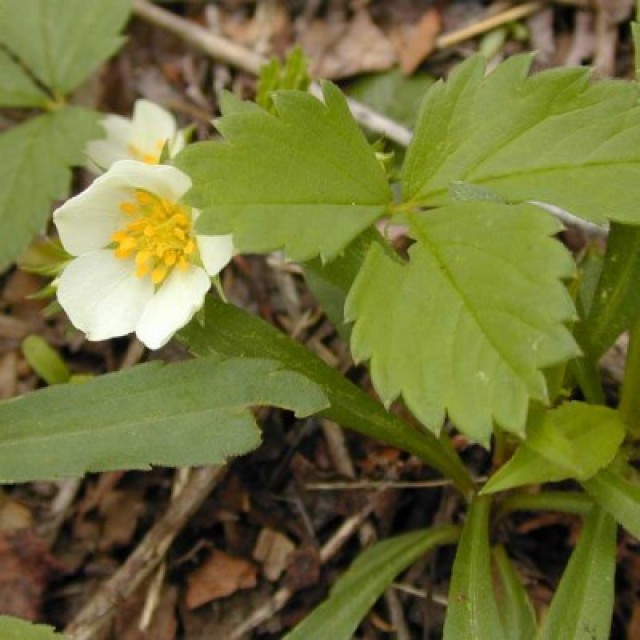COMMON NAME
Virginia strawberry
SCIENTIFIC NAME
Fragaria virginiana
ALSO KNOWN AS
C, Common strawberry, Heart berry, Virginia strawberry, Woods strawberry
Plant family
Rose (Rosaceae)
Plant group
Wildflowers and Herbs
Known as ode'imin by the Ojibwe. The wild strawberry is similar to the cultivated strawberry, but has much smaller berries! Look at the three teeth on the tips of the leaves. Wild strawberry has a small central tooth and longer teeth on each side.
261 reports
129+
OBSERVERS
261+
OBSERVATIONS
Identification hints
The wild strawberry is similar to the cultivated strawberry, but has much smaller berries! Look at the three teeth on the tips of the leaves. Wild strawberry has a small central tooth and longer teeth on each side.
Did you know?
Indigenous peoples throughout parts of Canada picked and ate the savory fruit of this plant. Midwestern prairie and Great Lakes tribes, such as the Omaha, Hidatsa, Mandan, Dakota, Pawnee, Blackfoot, Cheyenne, and the Winnebago ate these strawberries raw, cooked or dried. The Winnebago and Blackfoot made a tea with an infusion of the young leaves of this plant. The Ojibwe used root of Fragaria virginiana to treat "cholera infantum" and stomach aches. Also, plant attracts wildlife and butterflies.
DISTRIBUTION IN TH U.S.
Alaska
,
Alabama
,
Arkansas
,
Arizona
,
California
,
Colorado
,
Connecticut
,
Delaware
,
Florida
,
Georgia
,
Iowa
,
Idaho
,
Illinois
,
Indiana
,
Kansas
,
Kentucky
,
Louisiana
,
Massachusetts
,
Maryland
,
Maine
,
Michigan
,
Minnesota
,
Missouri
,
Mississippi
,
Montana
,
North Carolina
,
North Dakota
,
Nebraska
,
New Hampshire
,
New Jersey
,
New Mexico
,
Nevada
,
New York
,
Ohio
,
Oklahoma
,
Oregon
,
Pennsylvania
,
Rhode Island
,
South Carolina
,
South Dakota
,
Tennessee
,
Texas
,
Utah
,
Virginia
,
Vermont
,
Washington
,
Wisconsin
,
West Virginia
,
Wyoming
HABITAT
Natural habitat is in meadows and forest openings, at higher elevations where a good frost occurs.
ATTRIBUTES
Leaves
The leaves are thin, with toothed edges, and appear in leaflets of 3. Hairy stems grow up to 6 in (15 cm) long.
Flowers
Flowers have 5 white petals, with numerous yellow pistils and stamens in the center.
Fruits
A small red, edible, berry.
Bloom Time
Late spring (May), depending on location.
See Menu
- 2021 Chicago Botanic Garden. All Rights Reserved.
-
Creative Commons
BY-NC-SA 4.0 - Terms of Use
- Privacy Policy
- Data Sharing and Citation Policies
- 2021 Chicago Botanic Garden. All Rights Reserved.



